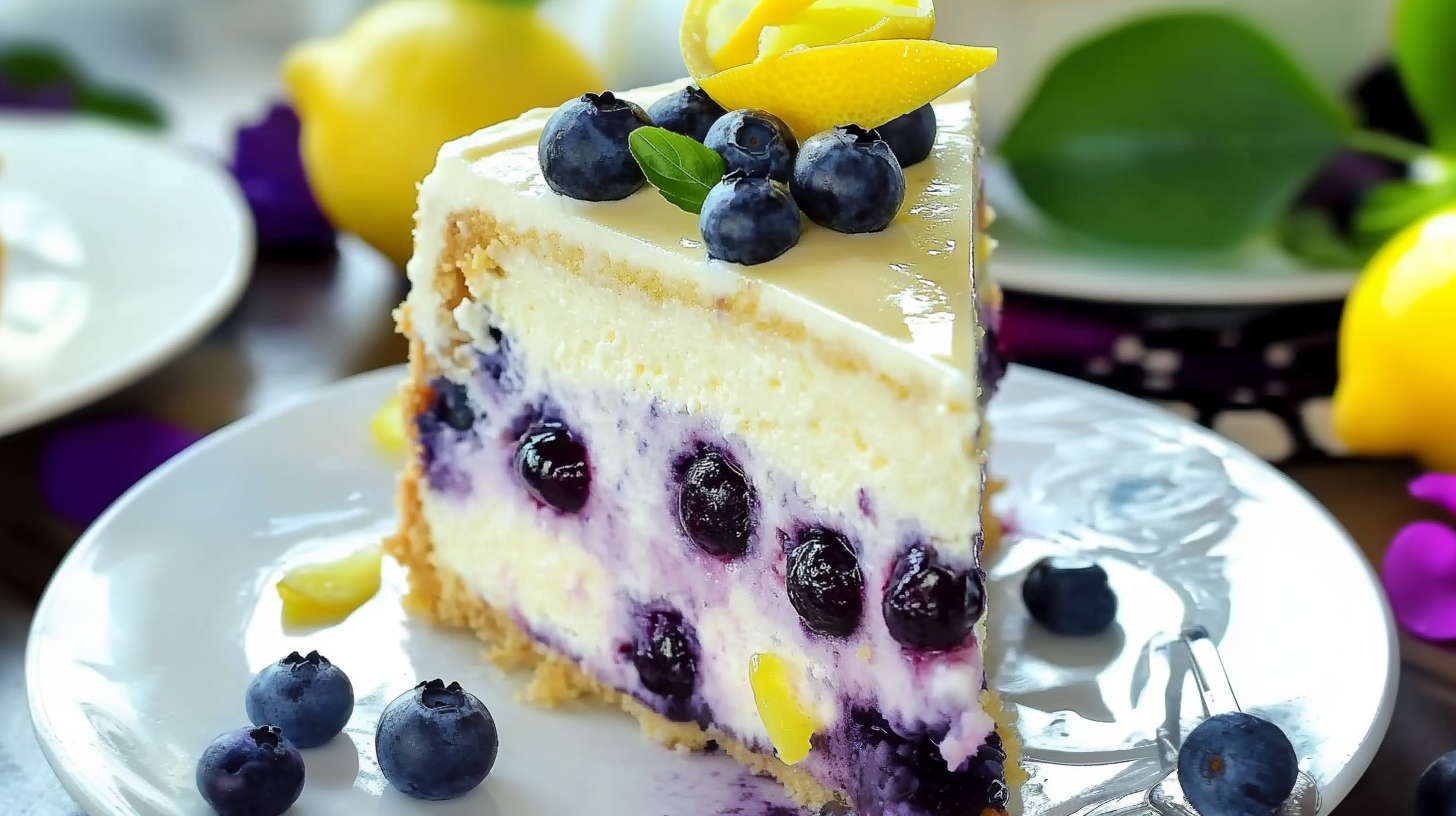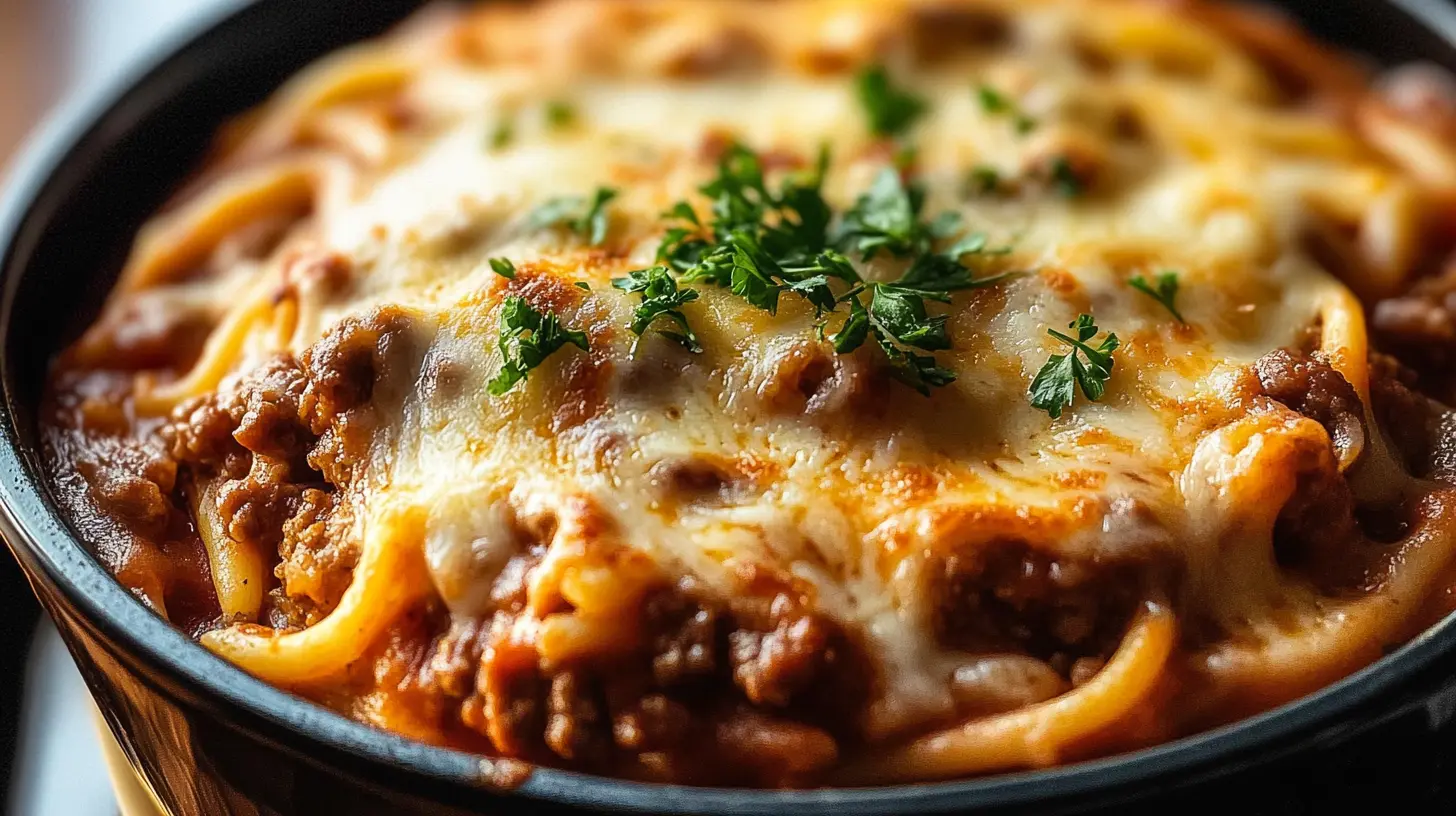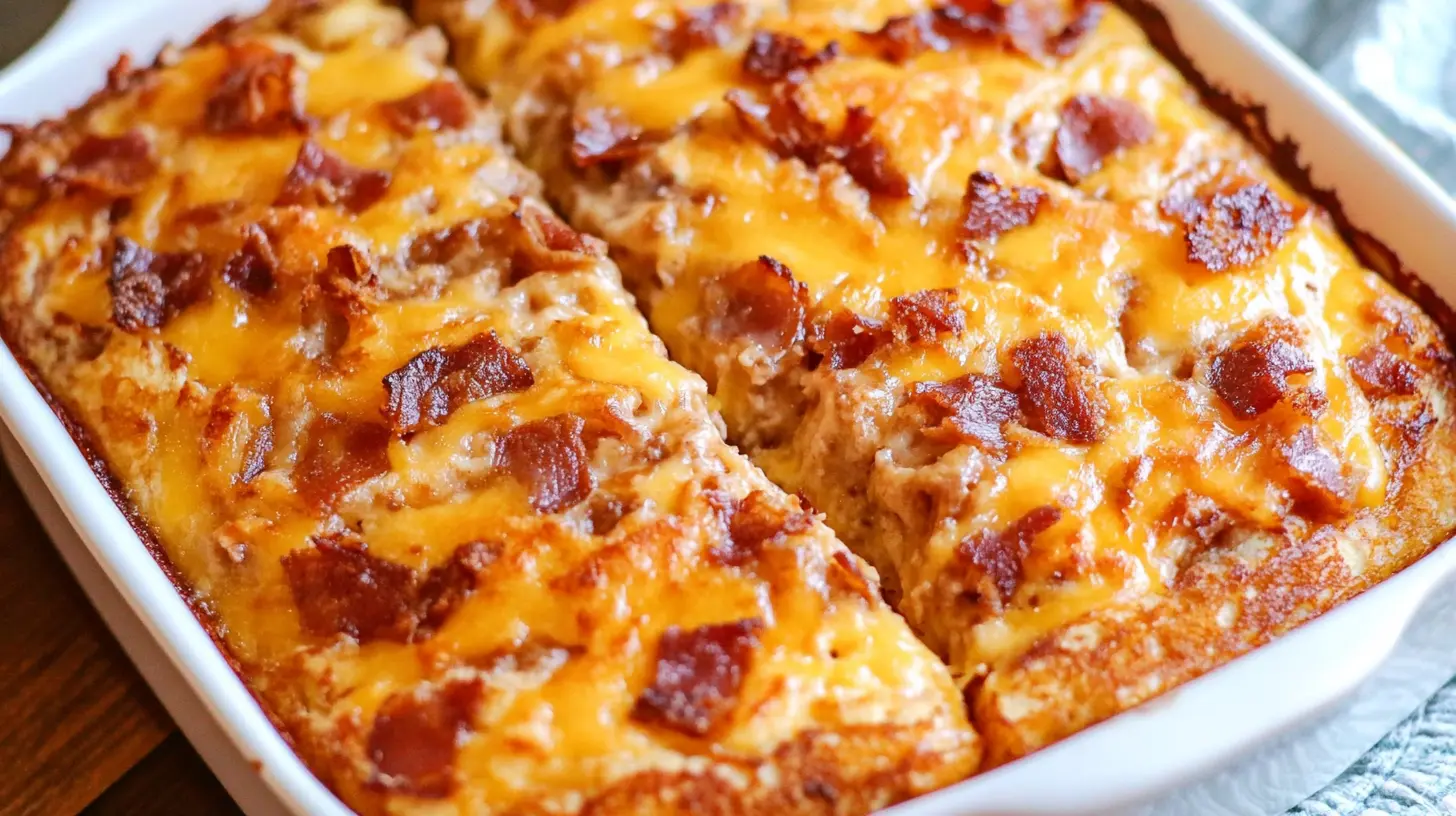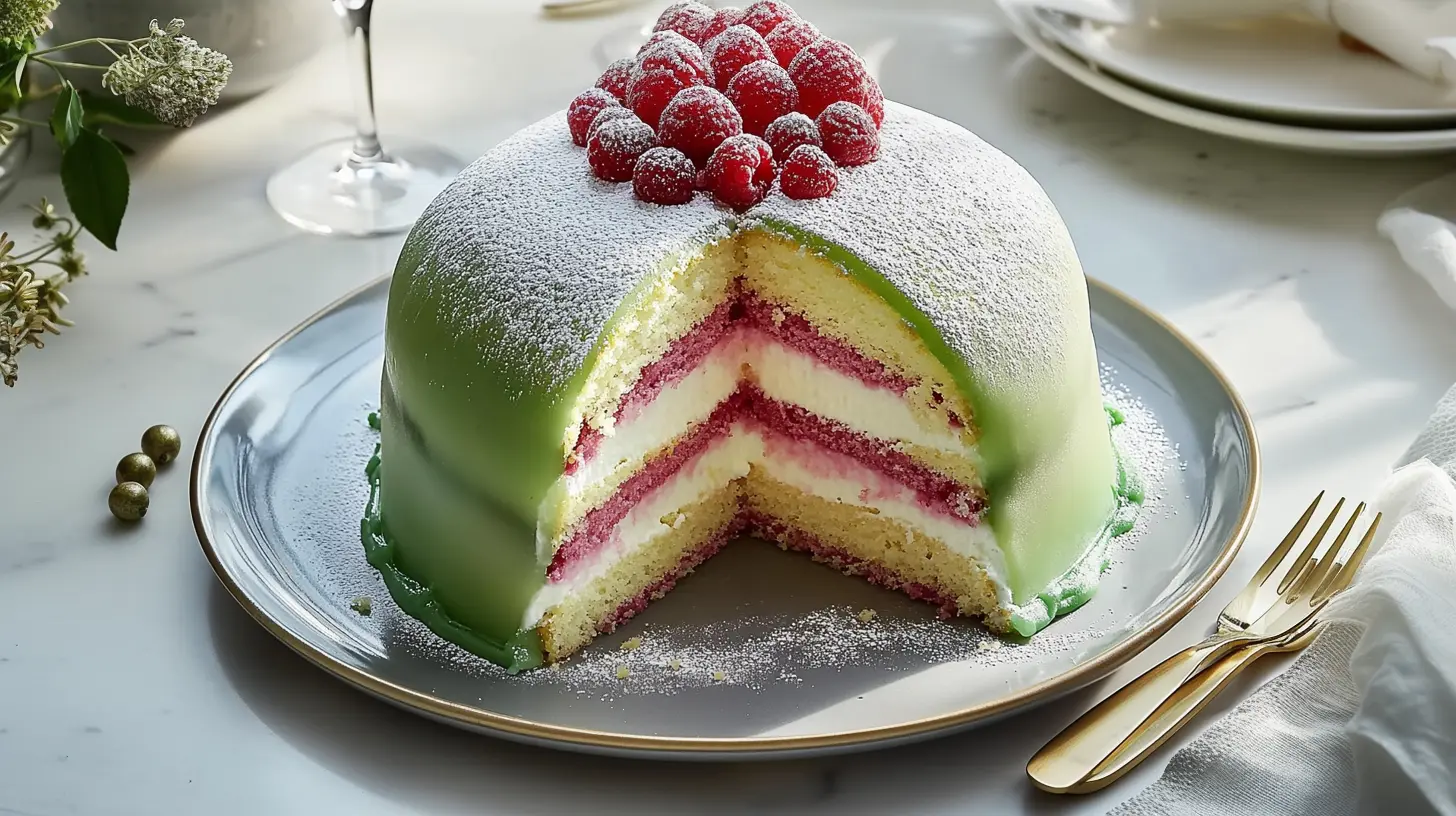Introduction to Lemon Blueberry Cheesecake
Lemon blueberry cheesecake is a delightful dessert that combines the zesty flavors of lemon with the sweetness of fresh blueberries. This recipe offers a light, refreshing twist on traditional cheesecake, making it perfect for warm-weather gatherings or any time you crave a fruity treat. Whether you’re a home cook, busy parent, or diet-conscious individual, this recipe is ideal for all, as it can be easily adapted to suit various dietary preferences, including vegan and gluten-free options.
Not only is this cheesecake simple to prepare, but it also provides health benefits due to the use of fresh fruits. Blueberries are packed with antioxidants, while lemons offer a boost of Vitamin C. With minimal prep time and a stunning visual appeal, this lemon blueberry cheesecake is perfect for parties, picnics, or an indulgent weekend dessert. If you’re looking for a sweet treat that feels indulgent but won’t weigh you down, this recipe is the one for you!
For more dessert inspiration, check out our apple crumble cheesecake recipe.
Benefits and Advantages of Lemon Blueberry Cheesecake
Lemon blueberry cheesecake stands out for several reasons, making it a go-to dessert for all kinds of occasions:
- Simplicity: Preparing this cheesecake is much simpler than you might expect. With easy-to-follow steps and common ingredients, even novice bakers will find this recipe approachable. Plus, it requires fewer ingredients than many traditional cheesecakes, making it quicker and more convenient.
- Health Benefits: Lemons and blueberries both offer a range of health benefits. Blueberries are known for their high antioxidant content, which promotes heart health and reduces inflammation. Lemons, on the other hand, are an excellent source of Vitamin C, which supports immune health. Incorporating these fruits into a dessert means you’re enjoying a treat that also nourishes your body.
- Dietary Adaptability: Whether you’re following a vegan, gluten-free, or low-sugar diet, this cheesecake can be easily adapted to fit your needs. Vegan cream cheese and gluten-free graham crackers can replace traditional ingredients, making it accessible to everyone.
- Perfect for Special Occasions: This cheesecake is a show-stopping dessert that looks just as good as it tastes. The vibrant blueberries and the zesty lemon flavors make it a popular choice for summer parties, holiday gatherings, or even as a wedding dessert. Its elegant appearance also makes it perfect for special occasions where presentation matters.
- Flavor Combination: The balance between the tart lemon and the sweetness of the blueberries creates a refreshing and irresistible flavor profile. The creamy texture of the cheesecake combined with the fruity topping adds depth, making each bite a delightful experience.
For more fruit-infused desserts, you might enjoy our caesar pasta salad recipe, which pairs beautifully with light meals.
Ingredients Overview
Essential Ingredients for Lemon Blueberry Cheesecake
To prepare the perfect lemon blueberry cheesecake, you’ll need the following ingredients:
- For the crust:
- 1 1/2 cups graham cracker crumbs (or gluten-free graham crackers)
- 1/4 cup granulated sugar
- 1/2 cup unsalted butter, melted (vegan butter for dairy-free)
- For the filling:
- 24 oz cream cheese, softened (vegan cream cheese for a plant-based option)
- 3/4 cup granulated sugar (or a low-sugar substitute like stevia)
- 3 large eggs (or flax eggs for a vegan option)
- 1/4 cup fresh lemon juice
- 1 tbsp lemon zest
- 1 tsp vanilla extract
- For the topping:
- 2 cups fresh blueberries
- 1/4 cup water
- 1/4 cup granulated sugar
- 1 tbsp cornstarch
- 1 tbsp lemon juice
Dietary Substitutions to Customize Your Lemon Blueberry Cheesecake
For those with specific dietary preferences or restrictions, here are some easy substitutions:
- Vegan Option:
- Use vegan cream cheese in place of regular cream cheese.
- Substitute eggs with flax eggs (1 tbsp ground flaxseed mixed with 3 tbsp water per egg).
- Gluten-Free Option:
- Replace the graham cracker crust with gluten-free graham crackers or almond flour.
- Ensure that all other ingredients, such as vanilla extract, are certified gluten-free.
- Low-Sugar Option:
- Use sugar substitutes like stevia or erythritol to lower the sugar content.
- Opt for unsweetened fresh blueberries in the topping.
These substitutions will ensure that everyone can enjoy the lemon blueberry cheesecake, regardless of dietary needs.
How to Prepare the Perfect Lemon Blueberry Cheesecake: Step-by-Step Guide
Follow these detailed steps to make a delicious lemon blueberry cheesecake from scratch.
First Step: Prepare the Crust
- Preheat your oven to 350°F (175°C). Grease a 9-inch springform pan.
- In a bowl, mix the graham cracker crumbs, sugar, and melted butter until combined.
- Press the mixture firmly into the bottom of the prepared pan. Bake for 10 minutes, then let cool while you prepare the filling.
Second Step: Make the Cheesecake Filling
- In a large mixing bowl, beat the softened cream cheese until smooth.
- Gradually add the sugar, beating until creamy.
- Mix in the eggs one at a time, followed by the lemon juice, lemon zest, and vanilla extract.
- Pour the filling over the cooled crust and smooth the top with a spatula.
Third Step: Bake the Cheesecake
- Bake the cheesecake for 50-60 minutes or until the center is set but still slightly jiggly.
- Turn off the oven and leave the cheesecake inside to cool for an additional hour. This prevents cracking.
- Afterward, refrigerate the cheesecake for at least 4 hours or overnight for the best results.
Fourth Step: Prepare the Blueberry Topping
- In a saucepan, combine the blueberries, water, sugar, cornstarch, and lemon juice. Cook over medium heat until the blueberries break down and the sauce thickens.
- Remove from heat and allow the sauce to cool.
Fifth Step: Assemble and Serve
- Once the cheesecake has chilled, spoon the blueberry topping over the top, spreading it evenly.
- Slice and serve your beautiful lemon blueberry cheesecake!
For an extra hint of elegance, garnish with fresh lemon slices or a sprinkle of powdered sugar.
Mastering Lemon Blueberry Cheesecake: Advanced Tips and Variations
For more experienced bakers, here are a few ways to elevate your lemon blueberry cheesecake:
- Add a Swirl: Before baking, drop spoonfuls of the blueberry mixture onto the cheesecake filling and swirl it with a knife for a marbled effect.
- Lemon Curd Layer: For an extra citrus punch, add a layer of homemade lemon curd between the cheesecake and blueberry topping.
- Crust Variations: Instead of graham crackers, try using a shortbread or digestive biscuit crust for a different flavor profile.
How to Store Lemon Blueberry Cheesecake: Best Practices
Storing your lemon blueberry cheesecake properly ensures it stays fresh for longer.
- Refrigeration: Store your cheesecake in an airtight container in the refrigerator for up to 5 days.
- Freezing: If you’d like to make it ahead of time, wrap the cheesecake tightly in plastic wrap, then aluminum foil, and freeze for up to 3 months. Thaw overnight in the fridge before serving.
Nutritional Value of Lemon Blueberry Cheesecake
Here is a general nutritional breakdown for one slice (based on a recipe yielding 12 servings):
- Calories: 350
- Total Fat: 22g
- Saturated Fat: 12g
- Cholesterol: 90mg
- Sodium: 300mg
- Carbohydrates: 32g
- Sugars: 22g
- Protein: 6g
Substituting lower-fat or vegan ingredients can reduce the calorie and fat content.
FAQs: Frequently Asked Questions About Lemon Blueberry Cheesecake
Can I use frozen blueberries for the topping?
Yes, frozen blueberries can be used for the topping in a lemon blueberry cheesecake. However, they may release more moisture than fresh blueberries, which can slightly alter the consistency of the topping. To avoid a runny sauce, thaw and drain the frozen blueberries before using them. You might also want to increase the cornstarch or thickening agent to ensure that the topping holds its shape well. Fresh blueberries, when available, will yield a brighter and fresher flavor, but frozen berries are a great alternative, especially when fresh blueberries are out of season.
Can I make the cheesecake gluten-free?
Absolutely! Making a lemon blueberry cheesecake gluten-free is simple with a few substitutions. The most important swap is in the crust. Instead of using traditional graham crackers, use gluten-free graham crackers or almond flour as the base. Many stores now carry gluten-free options that mimic the texture of regular graham crackers. As for the filling, it is naturally gluten-free, so no other adjustments are necessary. Just be sure that all your ingredients, including flavorings and thickeners like cornstarch, are labeled gluten-free to avoid cross-contamination.
How do I prevent the cheesecake from cracking?
Cracking is a common issue when baking cheesecakes, but it can be avoided by following a few key tips:
- Bake at a low temperature: Cheesecakes benefit from slow, even baking at lower temperatures, typically around 325°F (163°C).
- Water bath (bain-marie): Placing your cheesecake in a water bath helps regulate the temperature and adds moisture to the oven, preventing the top from drying out and cracking.
- Avoid overmixing: Too much air in the batter can cause the cheesecake to rise and then fall, leading to cracks.
- Gradual cooling: After baking, leave the cheesecake in the oven with the door cracked open to cool slowly. A sudden change in temperature can cause cracks. Following these steps will ensure a smooth, crack-free cheesecake.
Why do lemon and blueberry go together?
Lemon and blueberry are a classic flavor combination because they complement each other perfectly. The tartness of the lemon enhances the natural sweetness of blueberries, creating a balanced taste that is both refreshing and indulgent. Lemon’s citrusy brightness cuts through the richness of desserts like cheesecake, while the burst of blueberry sweetness adds depth and complexity to each bite. This flavor combination is versatile and popular in many desserts beyond cheesecake, such as muffins and tarts. You can read more about blueberries and their culinary uses on Wikipedia.
Can I use condensed milk instead of heavy cream in cheesecake?
Yes, you can substitute condensed milk for heavy cream in a cheesecake, but it will change the texture and flavor. Condensed milk is much sweeter and thicker than heavy cream, so you may need to adjust the sugar content in the recipe. Additionally, condensed milk will create a creamier, denser cheesecake, while heavy cream tends to produce a lighter and more airy texture. Be aware that using condensed milk will make the cheesecake significantly sweeter, so it’s best used in specific recipes that call for it.
Why do you put heavy cream in cheesecake?
Heavy cream is often added to cheesecake recipes to create a rich and creamy texture. It lightens the cream cheese mixture, preventing it from becoming too dense. The fat content in heavy cream contributes to the cheesecake’s smoothness and richness, making it melt-in-your-mouth delicious. Without heavy cream, a cheesecake could become too dense or dry, especially after baking. It’s the heavy cream that gives cheesecakes their characteristic velvety texture.
Why do you put vinegar in cheesecake?
Vinegar is not a common ingredient in most cheesecake recipes, but it can sometimes be used in specific recipes to add a slight tang and enhance the flavor, especially in dairy-free or vegan cheesecakes. Vinegar can also act as a stabilizer in some recipes, particularly those using plant-based ingredients, to mimic the tangy flavor that traditional cream cheese offers. White vinegar or apple cider vinegar is typically used in small amounts to maintain the balance without overpowering the cheesecake’s flavor.
What does adding an extra egg to cheesecake do?
Adding an extra egg to a cheesecake recipe can affect its texture, making it denser and richer. Eggs act as a binding agent, giving structure to the cheesecake. More eggs mean a firmer, more custard-like texture, while fewer eggs will result in a softer, creamier cheesecake. It’s important to note that too many eggs can also cause the cheesecake to crack, so it’s best to follow the recipe carefully or make adjustments in small increments to achieve your desired consistency.
What happens if you don’t put double cream in cheesecake?
If you omit double cream (or heavy cream) from a cheesecake recipe, the final texture will be denser and less creamy. The cream helps to lighten the cheesecake mixture, adding a soft and luxurious mouthfeel. Without it, the cheesecake can become too firm or dry, especially after baking. To maintain a creamy consistency without double cream, you could substitute it with a lighter option like sour cream or yogurt, though this will slightly alter the flavor.
What makes a cheesecake dense or fluffy?
The texture of a cheesecake is influenced by several factors. For a denser cheesecake, use more cream cheese, limit the amount of air you incorporate into the batter (don’t overmix), and bake at a lower temperature. A dense cheesecake typically has more eggs and a high-fat content from ingredients like cream cheese and heavy cream. On the other hand, a fluffy cheesecake results from folding in whipped cream or whipped egg whites, adding air to the batter. Baking the cheesecake at a higher temperature and using fewer eggs also contributes to a lighter texture.
What do they call heavy cream in Canada?
In Canada, heavy cream is referred to as whipping cream. It typically contains between 33-35% milk fat, which is similar to heavy cream in other countries. There is also “heavy whipping cream,” which has a slightly higher fat content (36%) and is ideal for recipes requiring a rich, creamy texture, such as cheesecake.
What is the difference between New York style cheesecake and regular cheesecake?
New York-style cheesecake is known for its dense, creamy texture and rich flavor, which comes from a large amount of cream cheese and the addition of heavy cream or sour cream. It is also baked at a high temperature, which gives it a slight caramelized crust. Regular cheesecake, on the other hand, can be lighter in texture, often containing a mix of cream cheese, cottage cheese, or ricotta. Some variations of regular cheesecake may not require baking at all, resulting in a mousse-like consistency. Learn more about the history of cheesecake on Wikipedia.
Why put cornstarch in cheesecake?
Cornstarch is often added to cheesecake batter to prevent cracking and help stabilize the filling. It also helps create a creamier texture by binding the moisture in the cheesecake, ensuring it holds its shape after baking. In addition to its binding properties, cornstarch can prevent the filling from becoming too runny, especially if the recipe contains a high liquid content from ingredients like lemon juice or fruit.
What happens if you overmix cheesecake batter?
Overmixing cheesecake batter incorporates too much air into the mixture, which can cause the cheesecake to rise too quickly in the oven and then collapse as it cools. This often results in unsightly cracks on the surface. Additionally, overmixing can lead to a denser, less creamy texture. To avoid this, mix the batter on low speed and only until the ingredients are just combined.
Conclusion:
Lemon blueberry cheesecake offers versatility and deliciousness, making it easy to adapt to various dietary needs. When you use frozen blueberries or carefully manage ingredients like eggs and heavy cream, you directly influence the texture. The ingredients you choose and the techniques you follow significantly impact the final result. Apply the tips above to create your perfect cheesecake, whether you prefer a dense New York style or a lighter, fluffier version.
For more ideas on perfecting cheesecakes, check out our cinnamon roll cheesecake recipe.





1 thought on “Easy Lemon Blueberry Cheesecake at Home”